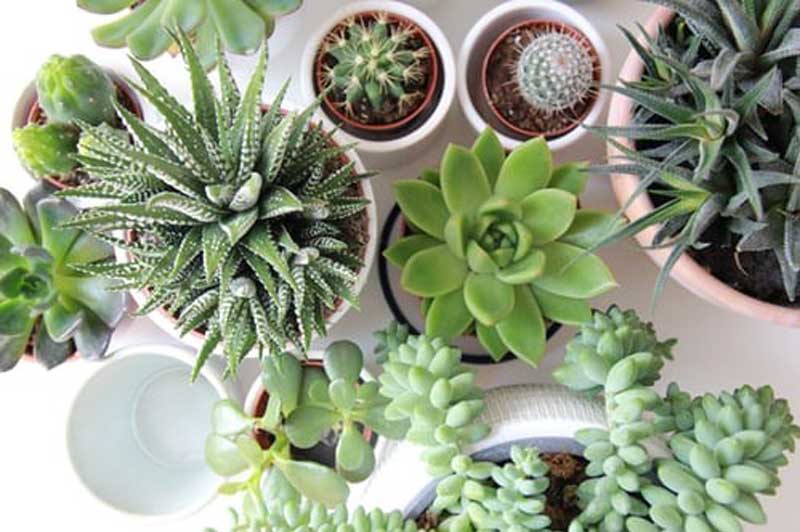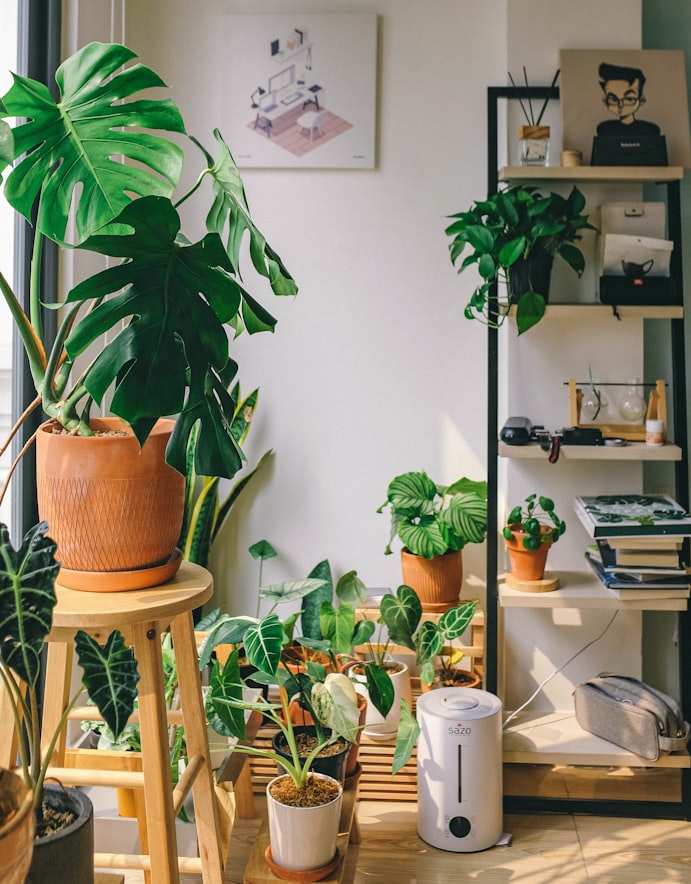When it comes to houseplant maintenance, it’s quite common for owners to move their houseplants outside in the summer so they can absorb fresh air, soak up rainwater, and bask in sunny summer weather. Because most houseplants are considered tropical, they need to be returned indoors once the weather turns cold again – especially in the Midwest.
Contrary to our desires, bringing plants inside for winter isn’t as easy as simply moving pots from the outdoors back in. Instead, there are a few precautions that must be taken when transferring plants from the great outdoors to the cozier indoors to prevent your plant from going into shock.
Here are five helpful suggestions for when you’re ready to bring your plants inside.

Choose the Right Plants
Believe it or not, not all plants can thrive indoors. If you have limited light, warmth, or humidity in your house, it can be an especially challenging task. If sunny spots are limited in your house, you may just have to prioritize what plants you keep. As for which plants to move, it’s best to start with the healthiest plants. If a plant has struggled all summer, or is almost dead, it probably isn’t the most ideal to move it inside.
Prepare Your Plants for Differing Conditions
For optimal preparation for the winter, it’s a good idea to move your tropical or non-hardy plants into a shady location outside. Once this is done, it is best to leave them there for approximately ten to fourteen days (if it won’t get too cold or near freezing overnight). This way, your plants will be better acclimated to the lower light conditions that they will be receiving indoors all winter.

Check for Pests
Among the most typical problems that comes with bringing houseplants indoors involves bringing unwanted pests with them. It goes a long way to check houseplants thoroughly for small insects including aphids, mealybugs, and spider mites before removing them if necessary. It’s surprisingly easy for these pests to cling on to your plants when brought inside and infest your other houseplants. To avoid this, it can be helpful to gently wash off your plants with water prior to bringing them in.
Consider Pruning or Repotting
If your plants have grown over the summer, you may want to consider either pruning or repotting them. If you’re pruning it back, don’t prune back more than one-third of the plant. On top of this, you might want to make sure to root prune an equal amount off the roots as you do off the foliage. If you will be repotting, it’s ideal to repot to a container that is at least 2 inches larger than the current container so that the plant has enough room to grow.

Take Care of Tropical Plants
If you have tropical plants, it’s crucial to place them in well-lit areas indoors away from heat vents and cold air. To keep your surfaces clean, be sure to place a saucer under the pot. Water the plants well with lukewarm water, and then let it dry before repeating the process. It’s important to prevent standing water from sitting in the pot or saucer since it can lead to mold or plant rot.
These are just a few surface-level tips if you plan on bringing plants inside or if you already have them indoors for the winter season.
Want more information about how to best prep and tend to your plants while they’re indoors? Check out these blogs about indoor plant care:






